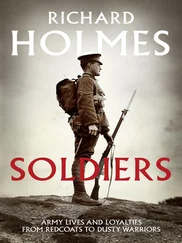PROLOGUE
Drums on the Sutlej
DARBY FULCHER, drummer in the grenadier company of HM’s 50th Regiment of Foot, normally wakes his comrades on campaign by walking through the lines of sleeping men, rapping out the insistent drumbeat of the General Call to Arms; but today, 10 February 1846, will be different. He is eighteen years old, with six years’ service in the army, all of it in India, where he arrived as a band boy in the summer of 1840. The result of a brief and tipsy union between a sailor and one of those mercenary Portsmouth ladies unkindly known as ‘the fireships of the sally-port’, young Darby decided that a red coat was better than an empty belly, and joined the 50th as it passed through Portsmouth on its way to embark.
Simply getting to India was not easy. The East Indiaman Ferguson, which carried the 50th’s recruits from Portsmouth, struck a shoal in the Torres Strait, but all her passengers and crew were safely taken off before she foundered, and he soon found himself in the military cantonment at Chinsura, just up the River Hooghly from Calcutta. The 50th lost twenty of its soldiers from cholera in its first months in India, before sailing to Moulmein in the autumn of 1841, in the expectation that friction with the King of Burma would lead to another war. But it was soon back in Chinsura, only to lose eighty more men (including, inauspiciously, Assistant Surgeon Burns) in another cholera epidemic.
A move up the Hooghly to a new garrison at Cawnpore proved scarcely less lethal: in three separate accidents the regiment lost four sergeants, the drum-major, sixty-three privates, four women and eleven children. On 29 December 1843, Darby Fulcher had his baptism of fire when a force under Major General Sir John Grey beat the fierce Marathas at Punniar and in which the 50th lost just an officer and eight men. Lieutenant Bellars, the regiment’s acting adjutant, described this battle in his diary:
Directly we reached the top of the hill … the enemy’s cannon balls were falling to the right and left of us, but being badly directed did us no harm. We moved a few paces over the hill, when they opened a heavy fire of grape and canister upon us, with four guns planted about fifty paces from the bottom of the hill, besides a tremendous fire from their infantry, who were in a small ravine. We made the best of our way down the hill, which was very high and steep, keeping the best order possible, and continuing our firing the whole time. We halted at the bottom under cover of a small bank and hedge, keeping up our fire for about ten minutes, when we were ordered to charge, which we did with a glorious cheer. But so well did the enemy stick to their guns, that the last discharge took place when we were within ten yards of them, and the gunners were only driven from their guns at the point of the bayonet. So determined were they, indeed, that until actually unable to move from wounds, they cut away with their sharp sabres at our men, many of whom were severely wounded by them. Thus ended this short but sharp skirmish, with the capture of four guns (one a large brass one) and a few prisoners. 1
Fulcher’s dark hair, sharp features and prominent teeth made the sobriquet ‘band rat’ all too appropriate, and when he left the band to become a company drummer the name stuck. By now, as one of the many Irish wits in the 50th observed, he was a very big rat indeed, and should therefore be known as Bandicoot Fulcher. Colour Sergeant Thompson, as serious-minded as befitted the company’s senior non-commissioned officer, confirmed that this was wholly appropriate, for the bandicoot or musk rat ‘was distinguished by its troublesome smell’, and here too, he pronounced, there was a distinct resemblance. 2The abuse was as good-natured as barrack-room jokes can be, and Fulcher, big for his age, with a vocabulary of the most studied profanity and a taste for strong drink, fitted comfortably into the tight little world of the grenadier company, with its three officers and eighty NCOs and men. It was the senior of the 50th’s eight companies, leading the way when the battalion marched in column, and on its right when it shook out into line. Fulcher had no idea why it was called the grenadier company, for grenades (whatever they might be) had not been issued within living memory.
His job entailed a good deal more than drumming. A company’s two drummers were its captain’s confidential assistants, holding his horse and helping him into the saddle, running errands for him in barracks and standing close by him in the field to relay his orders and interpret other drumbeats. They administered floggings, under the eyes of the drum-major, sergeant major and adjutant. The humiliating ritual of drumming a disgraced soldier out of barracks involved the man, his badges and buttons cut away, being marched through the camp to the tune of ‘The Rogue’s March’:
Twenty I got for selling my coat
Twenty for selling my blanket
If ever I ‘list for a soldier again
The devil shall be my sergeant
He was then kicked through the barrack gate by the most junior drummer – the whole ghastly process sometimes being known as ‘John Drum’s entertainment’. Useful though they were in barracks and the field, drummers had a reputation for being badly behaved. Captain Albert Hervey of the 41st Madras Native Infantry recalled that:
While passing through a village early one morning there were a number of ducks waddling along to a piece of water hard by. Our drummers came right amongst them, several were snatched up unobserved, and crammed into the drums. At another time, as we passed through a toddy-tope, some of them contrived to get away and imbibe plentifully of tempting beverage. They are strange rascals are our drummers, and up to all kinds of mischief. 3
Darby Fulcher wears a waist-length red serge ‘shell jacket’ closed by ten pewter buttons, with blue standing collar and pointed cuffs. The change to blue is recent; the regiment’s facings were once black, accounting for its nickname ‘The Dirty Half-Hundred’. His grenadier comrades show their elite status by crescent-shaped red shoulder wings edged with white, and Fulcher, in addition, is liberally chevroned with white drummer’s lace. His flat-topped Kilmarnock cap has a white canvas cover and his regiment’s number in a brass Roman numeral ‘L’ above its peak. Dark blue woollen trousers with a narrow red stripe fall over square-toed black boots, issued on the assumption that they will fit either foot. Fulcher’s function means that he is spared the white pipe-clayed cross-belts, supporting an ammunition pouch on the left and bayonet on the right, worn by his comrades; but, like them, he carries a circular water-bottle on a leather strap across his left shoulder and a white canvas haversack slung across his right. A short sword with a brass hilt sits over his left hip, and it is entirely in character for him to have sharpened it. 4
His side drum hangs, for the moment, over his right shoulder, skin flat against his bent back, and he holds it there by one of its pipe-clayed cords. 5When he needs to use it he will hook it onto the drum carriage, the broad white belt that crosses his right shoulder, but there is no sense in doing that too soon, for the drum will rub against his left thigh and gall his knee, where it balances when his leg is bent.
Fulcher’s musical training derives from Samuel Potter’s book The Art of Beating the Drum, first published in 1810, but still passed on, becoming greasier with age, to successive drum-majors in the 50th. Potter advises:
Before a boy starts practicing a drum place him perfectly upright and place his left heel in the hollow of the right foot. Put the drum sticks into his hands, the right stick to be grasped by the whole hand 2½ inches from the top, similar to grasping a sword or stick when going to play Back-sword. The left hand one to be held between the thumb and forefinger close in the hollow, leaving the top as much protruding resembling a pen when going to write.
Читать дальше












